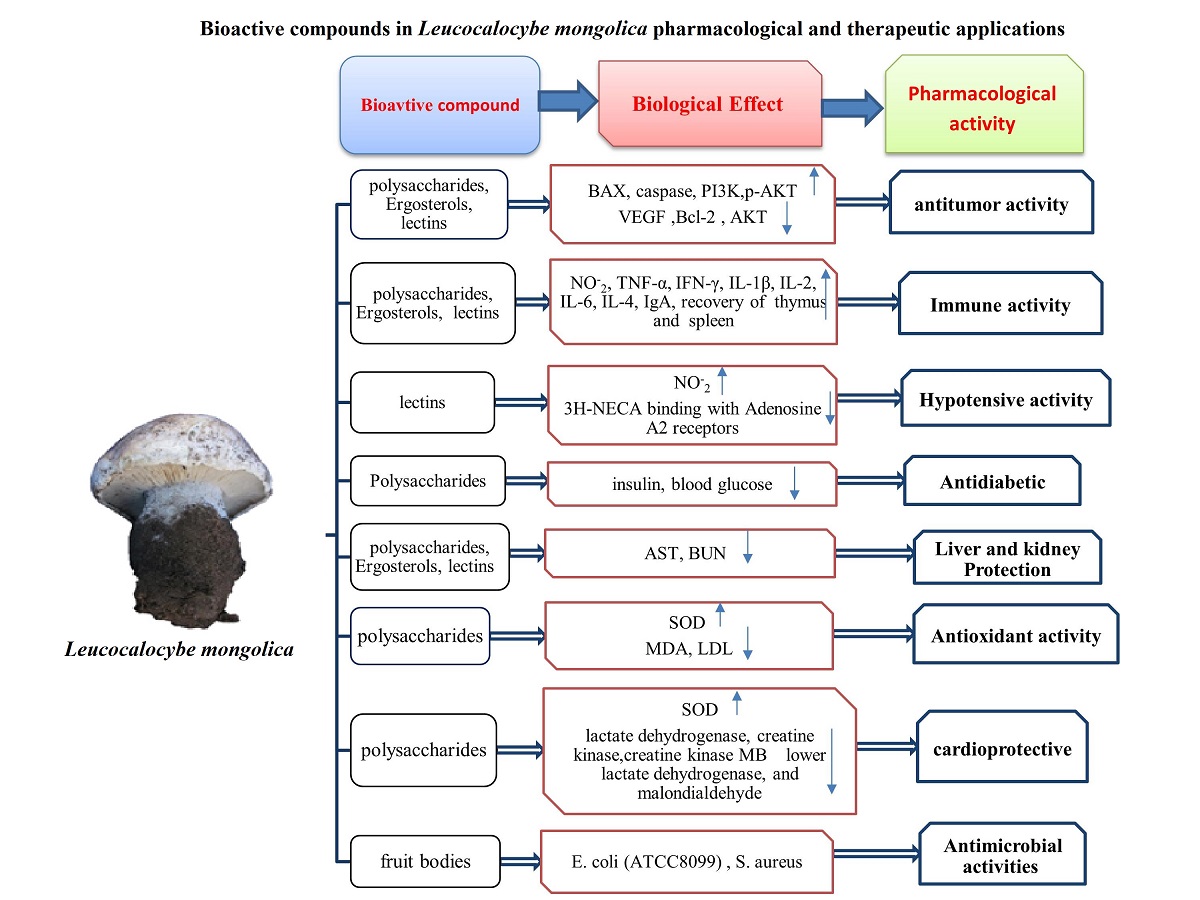Preprint
Review
Bioactive Compounds in Leucocalocybe mongolica Pharmacological and Therapeutic Applications
Altmetrics
Downloads
332
Views
354
Comments
0
This version is not peer-reviewed
Submitted:
22 March 2021
Posted:
23 March 2021
You are already at the latest version
Alerts
Abstract
Medicinal mushrooms have got much attention from biologists in the last decades. Leucocalocybe mongolica Imai remains one of the famous clinical and edible mushrooms used in traditional Chinese medicine and Mongolian medicine to treat various diseases. It also commonly consumes in Chinese and Mongolian daily dishes. Numerous biochemical components exist in L. mongolica, especially in the fruiting bodies include; polysaccharides, sterol, lectins, laccase, amino acids, terpenes, volatile compounds, and so on. These biomedical components possess a lot of medicinal properties and provide diverse therapeutical effects for human health, such as anti-tumor activity, antiproliferative activity, anti-diabetes properties, hypotensive effect, hepatoprotective effect, antioxidant activity, cardioprotective effect, and so on. However, this review's main objectives are to illustrate some basics about the bioactive components in L. mongolica and its pharmacological effects on the human body. In addition to giving forward some suggestions for future research on this medicinal mushroom.

Keywords:
Subject: Medicine and Pharmacology - Immunology and Allergy
Copyright: This open access article is published under a Creative Commons CC BY 4.0 license, which permit the free download, distribution, and reuse, provided that the author and preprint are cited in any reuse.
MDPI Initiatives
Important Links
© 2024 MDPI (Basel, Switzerland) unless otherwise stated




